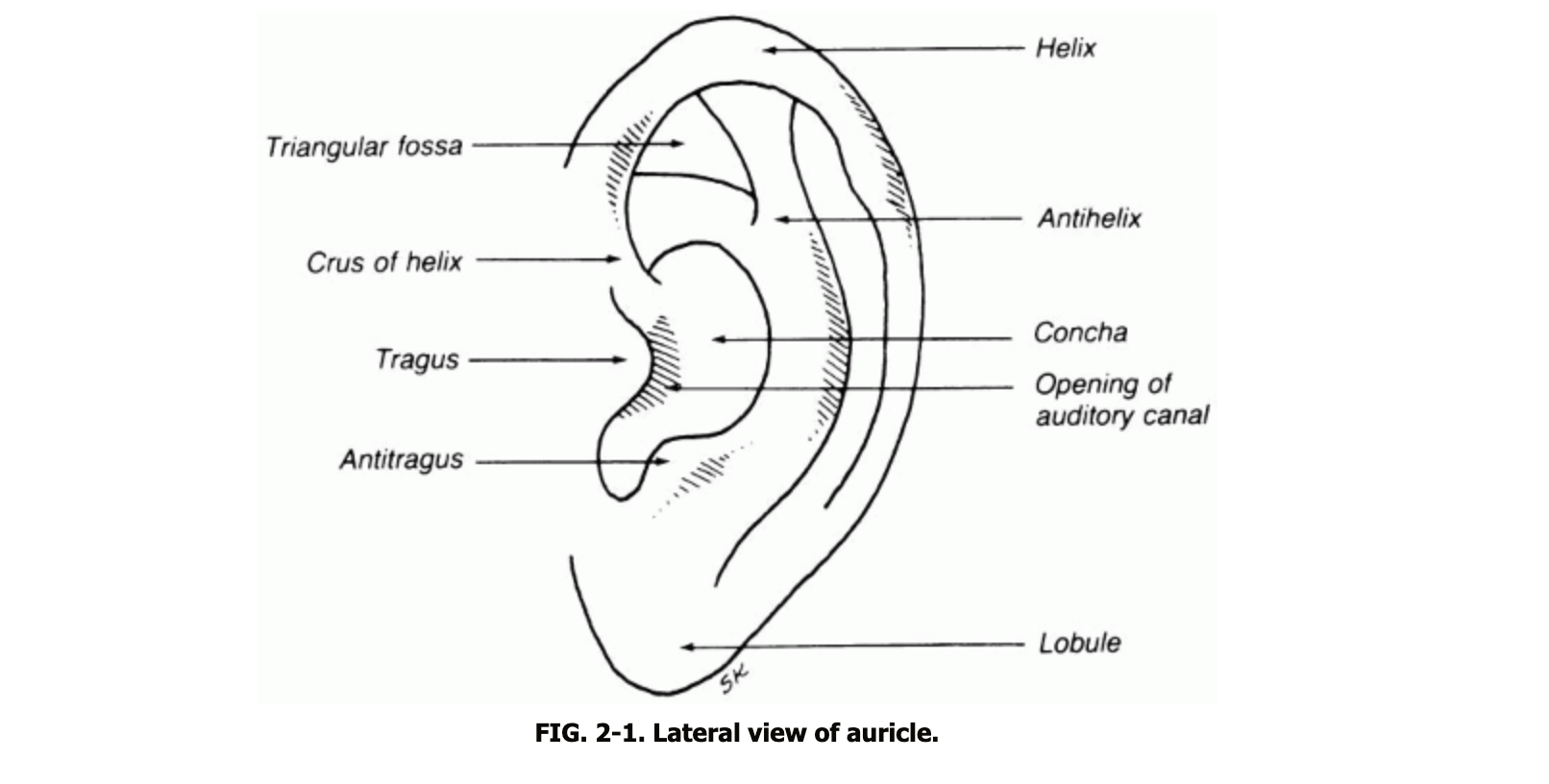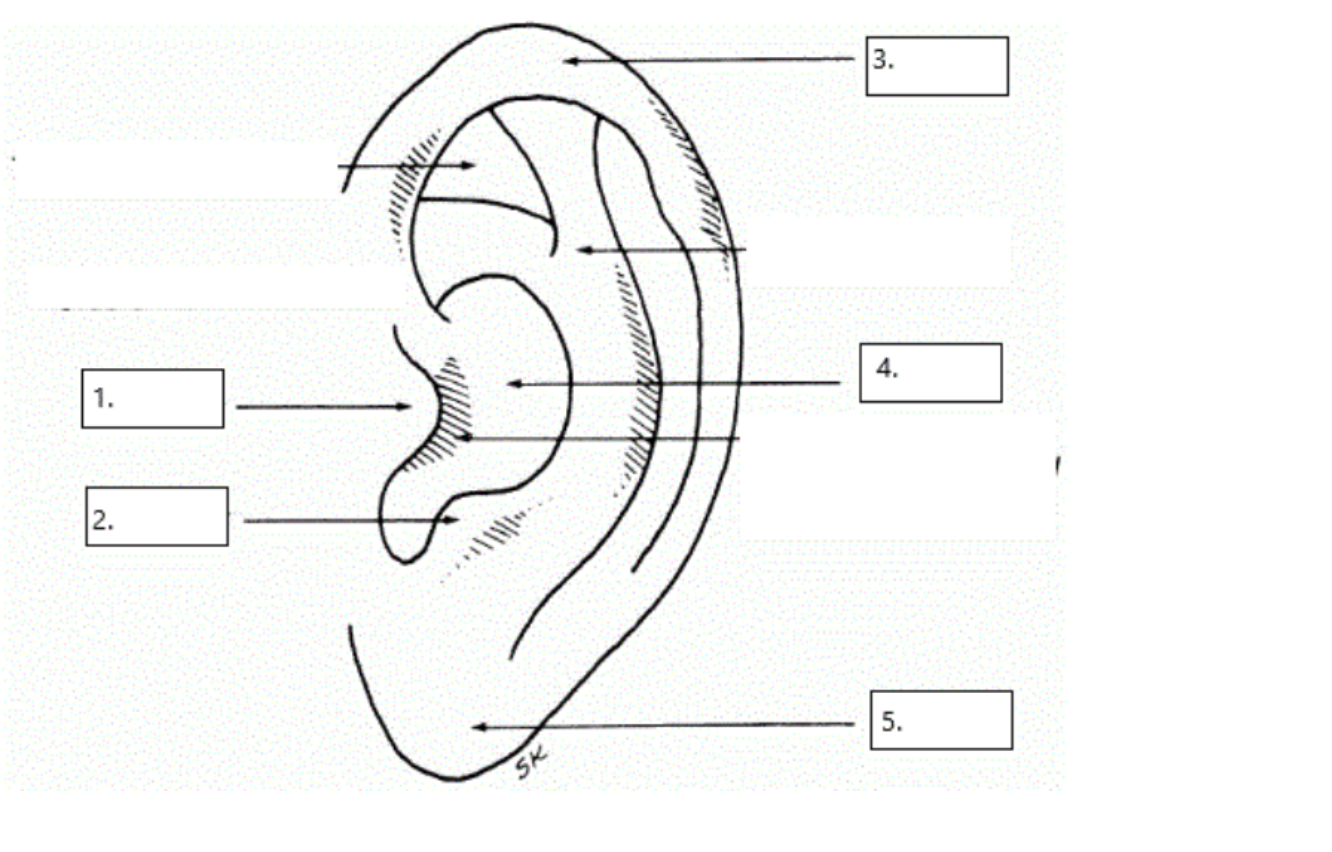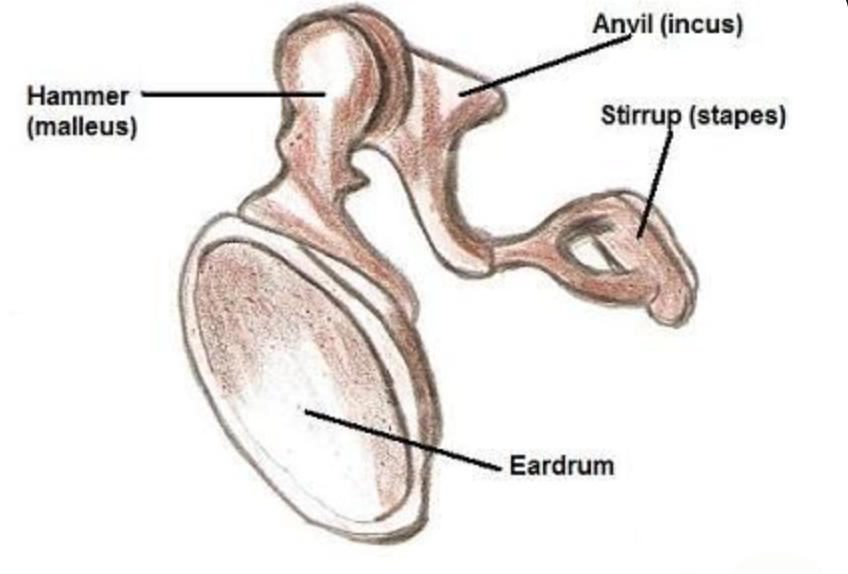Audiology Midterm: Ear Anatomy, Hearing Loss, and Development Milestones
1/76
There's no tags or description
Looks like no tags are added yet.
Name | Mastery | Learn | Test | Matching | Spaced |
|---|
No study sessions yet.
77 Terms
What are the specialty areas of audiology?
Pediatric Audiology, Medical Audiology, Dispensing Audiology, Industrial Audiology, Educational Audiology.
What historical event contributed to the evolution of audiology?
World War II, when military members returned home with hearing loss due to noise exposure.
Who is known as the 'Father of Audiology'?
Raymond Carhart, who created the term 'audiology' in 1945.
What is the Carhart Notch?
A dip in the audiogram indicating hearing loss related to the ear bones, specifically otosclerosis.
What does clinical audiology study?
Normal and disordered hearing and balance, including evaluation, identification of disorders, and rehabilitation.
How is sound created?
By the disturbance of molecules in a medium, resulting in energy.
What are the two main types of sound conduction?
Bone Conduction and Air Conduction.
What are the three parts of the ear?
Outer ear, Middle ear, and Inner ear.
What structures make up the outer ear?
Auricle/Pinna, External Auditory Meatus (Ear Canal), and Tympanic Membrane (Ear Drum).
What is the function of the tympanic membrane?
To separate the External Auditory Canal from the Middle Ear and to amplify high frequency sounds.
What are the three bones in the middle ear?
Malleus (Hammer), Incus (Anvil), and Stapes (Stirrup).
What is the role of the Eustachian tube?
To drain fluid from the middle ear and provide air to that space.
What is the cochlea responsible for?
Housing the sensory organ for hearing, known as the Organ of Corti.
What are inner hair cells responsible for?
Mechanoelectrical transduction, converting sound vibrations into electrical signals.
What is the function of outer hair cells?
To amplify sound vibrations and enhance hearing sensitivity.
What is the significance of the basilar membrane?
It has a tonotopic organization, tuned to receive sounds of different frequencies.
What are the semicircular canals responsible for?
Balance and posture, containing sensory receptors for these functions.
What cranial nerve is associated with hearing and balance?
Cranial Nerve VIII - Vestibulocochlear, which has vestibular and cochlear branches.
What is the role of the auditory cortex?
To process auditory information received from the afferent auditory pathway.
When does the outer, middle, and inner ear begin to develop during pregnancy?
In the first trimester.
What is amplitude in relation to sound?
The distance from the baseline to the maximum displacement on a wave, determining sound intensity.
What does frequency refer to in sound?
The number of cycles of a sound wave.
What is the duration of a sound wave?
The time it takes for the wave to complete one oscillation.
What is the difference between simple and complex sounds?
Simple sounds have energy at one frequency (pure tone), while complex sounds have energy at multiple frequencies.
What factors influence resonance in sound?
Mass and stiffness of the vocal tract, as well as its length and shape.
What structures develop from the first pharyngeal cleft?
The pinna and ossicles, as well as the external auditory canal.
When does the cochlea mature and nerve fibers form?
During the second trimester.
What happens to the external auditory canal (EAC) by the end of the second trimester?
The EAC is fully formed.
What occurs during week 16 of fetal development regarding the EAC?
The EAC forms with a solid 'plug', which is a temporary blockage.
What happens to the meatal plug of the EAC by week 21-28?
The meatal plug dissolves.
What condition results from improper recanalization of the EAC?
Atresia of the EAC.
What significant development occurs during the third trimester related to hearing?
The facial nerve is formed and myelin appears.
What auditory milestone is observed in infants from birth to 3 months?
Infants wake up due to sudden noises and are comforted by familiar voices.
At what age can infants start to search for sound by moving their eyes and turning their heads?
3-6 months.
What auditory skill is developed by infants aged 6-10 months?
They can turn around to locate a sound source while sitting up.
What communication milestone is reached by 15-18 months?
Children can hear and react to being called from another room and form their first words.
What is a key milestone in communication for children at 24 months?
They have a 200+ word spoken vocabulary and begin to string together sentences.
What signs may indicate hearing loss in children?
Babbling that stopped around 6 months, delayed speech, frequent ear infections, and lack of attention to their names.
What is a typical speech development milestone for a 5-year-old?
They can carry on a conversation with adults, and their speech is mostly intelligible with few mispronounced words.
What auditory milestone is observed at 10-15 months?
Children can locate a sound source behind them and imitate simple sounds and words.
What communication skill is typically developed by 2-3 years?
Children enjoy being read to and can point to pictures when asked.
What happens to a child's babbling around 6-8 months?
They begin to babble.
What understanding milestone is reached by 3 years?
Children understand and use simple verbs and can use complete sentences most of the time.
What is a common sign of hearing loss related to TV watching in children?
Sitting too close to the TV or asking for the volume to be increased.
What is the first spoken word milestone typically reached by 12 months?
Children say their first spoken word and understand simple words and sounds.
What does the study indicate about hearing loss in speech-delayed children?
There is an increased prevalence of hearing loss among this population.
How many people in the US have hearing loss?
48 million people.
What is conductive hearing loss?
Hearing loss related to damage to the outer or middle ear, causing a reduction in sound intensity.
What is an air-bone gap in hearing loss?
A condition where hearing thresholds are better by bone conduction than by air conduction.
What are some causes of conductive hearing loss related to the outer ear?
Stenosis, wax impaction, exostoses, otitis externa, and congenital malformations.
What is otitis media?
A buildup of fluid in the middle ear, which may or may not be infected.
What is the difference between serous otitis media and acute otitis media?
Serous otitis media involves non-infected fluid, while acute otitis media involves infected fluid.
What is cholesteatoma?
A benign growth of skin cells in the middle ear that can cause hearing loss.
What is sensorineural hearing loss (SNHL)?
Hearing loss due to dysfunction of the inner ear, usually irreversible.
What is the typical audiogram finding for SNHL?
Hearing thresholds by bone conduction and air conduction are almost the same, with no air-bone gaps.
What are some causes of sensorineural hearing loss?
Genetic factors, infectious diseases, medical treatments, and malformations of the inner ear.
What is Meniere's Disease?
A disorder of the inner ear characterized by fluctuating hearing loss, vertigo, tinnitus, and aural fullness.
What is presbycusis?
Gradual reduction of hearing over time, starting with high-frequency loss.
What is noise-induced hearing loss (NIHL)?
Hearing loss caused by damage to hair cells from noise exposure, typically showing a notch around 4000 Hz.
What is mixed hearing loss?
A combination of conductive and sensorineural hearing loss.
What defines central hearing loss?
Hearing loss related to damage beyond the cochlea, affecting the auditory nerve or brain areas processing sound.
What is functional hearing loss?
Non-organic hearing loss with no structural or physiological damage, often for psychological or monetary reasons.
What are the effects of mild hearing loss?
Difficulty hearing soft speech or conversation in background noise.
What is the audiogram configuration for flat hearing loss?
Hearing thresholds tend to stay within 15 dB of each other, often seen in severe or profound loss.
What characterizes a sloping audiogram configuration?
Best response in low frequencies, with increasing severity in higher frequencies.
What is the purpose of the Hughson Westlake method?
To determine the softest sound a person can hear across frequencies from 250-8000 Hz.
What is the difference between behavioral and nonbehavioral assessments?
Behavioral assessments are subjective and depend on listener participation, while nonbehavioral assessments are objective and measure physiological responses.
What is tympanometry?
An objective measurement in a standard audiological test battery assessing middle ear function.
What does pure-tone testing assess?
The entire auditory system to determine hearing status, degree of loss, and asymmetries.
What is the purpose of speech testing in audiology?
To quantify a patient's hearing threshold levels using speech stimuli to validate pure tone responses.
What is the Speech Recognition Threshold (SRT)?
The minimum hearing level at which an individual can recognize 75% of speech material.
What is the significance of the Pure Tone Average (PTA)?
It is the average of thresholds at 500, 1000, and 2000 Hz, expected to match with speech tests.
What is the role of an audiometer?
A machine used to conduct hearing tests, calibrated regularly for accurate results.
What is the purpose of otoscopy in audiology?
To assess the health of the pinna, ear canal, and tympanic membrane.
What is the significance of the threshold in hearing tests?
It is the softest level at which a patient can hear a sound, determined through specific testing methods.

Landmarks of the Outer Ear
Helix, Tragus, Concha, Antitragus, Lobule (Earlobe)


4 parts of the Middle Ear
Tympanic Membrane, Malleus, Incus, Stapes